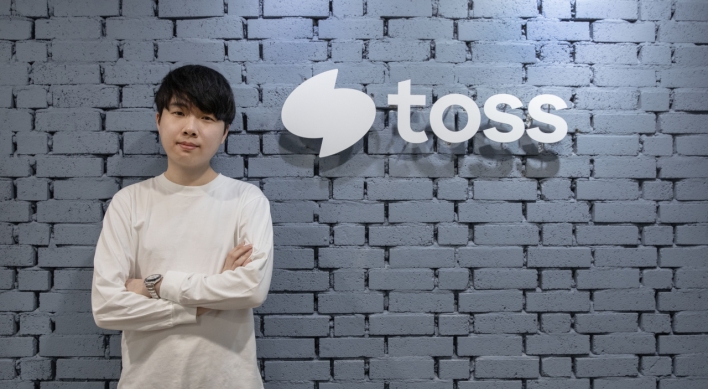The Cabinet Office’s Central Disaster Prevention Council said last week that a megaquake of magnitude-9 in the Nankai Trough off the Pacific coasts and its ensuing tsunami could kill up to 323,000 people in 30 prefectures including Tokyo, with about 70 percent of the deaths tsunami-related. Malfunctioning water gates would cause 23,000 more deaths.
The estimated number of victims shot up from the 2003 estimate of some 24,700 deaths. By comparison, some 19,000 people died or went missing in the 3/11 disasters of 2011. The latest estimate represents the worst-case scenario, which assumes that the largest-class earthquake and tsunami would occur in the Nankai Trough, a 900-km subduction zone off the Pacific coasts stretching from Shizuoka Prefecture to Shikoku. There is no need to excessively worry because the probability of such a massive quake in the trough is very low. But as the council said in a news release, it is important for the public “to be afraid (of disasters) in the right way.”
It is imperative that the central and local governments work out a strategy to cope with the worst-case scenario and make steady preparations. Doing so will help minimize the damage.
In March 2012, the council announced a revision of the 2003 estimate that said if a megaquake occurred in the Nankai Trough, tsunami higher than 20 meters might hit 23 municipalities in six prefectures stretching from Kanto to Shikoku on Japan’s Pacific side. But it did not give the number of deaths from the megaquake and ensuing tsunami. The 2003 estimate had predicted that no areas would be hit by tsunami higher than 20 meters.
The latest estimate says that 34-meter-high tsunami could hit Kuroshio and Tosashimizu in Kochi Prefecture; 33-meter-high tsunami, Shimoda, Shizuoka Prefecture; and at least 20-meter-high tsunami, eight prefectures including Tokyo.
The worst-case scenario is based on the assumption that the megaquake will occur late at night in winter, that big tsunami will hit areas ranging from Suruga Bay off Shizuoka Prefecture to Kii Peninsula, and that 20 percent of people will start evacuating within 10 minutes after the occurrence of the megaquake.
Shizuoka Prefecture could have the largest number of deaths with 109,000. Up to 623,000 people could be injured across the country. Water at least one meter high from tsunami could flood 602 sq. km of land in 24 prefectures including Tokyo, or about one-third the area of Osaka Prefecture.
An important point of the latest estimate is that if 70 percent of people start evacuating as soon as the megaquake happens and others somehow manage to evacuate, the number of deaths could be as low as 209,000. If adequate fire-proofing and quake-proofing measures are taken, the deaths could be limited to 61,000.
The government plans to hurriedly work out a special bill to improve preparations for the expected megaquake and tsunami and submit it to the regular Diet session next year. In writing the bill, it will be important not only to adopt a strategy and measures to minimize damage from the expected disasters but also to incorporate a scenario for post-disaster reconstruction.
There is no magic to minimize damage from a megaquake and tsunami. Buildings must be made resilient to quakes and evacuation routes must be improved and evacuation towers must be constructed in areas massive tsunami are likely to hit.
Financial measures need to be developed to help individuals and local governments to move buildings to highland areas. Local governments and residents may have to consider a plan to move central parts of urban areas to highland areas.
The latest estimate says that a maximum 2.386 million buildings could be destroyed or damaged (including by fire) in the worst-case scenario. Temporary evacuation centers and prefabricated houses would not be enough to accommodate people who have lost residences. Local governments should be encouraged to sign agreements among themselves under which local governments not hit by disasters would accept residents from areas hit by disasters.
The planned bill should include a specific way of providing funds to disaster-hit local governments so that they can quickly get funds from the central government for relief and reconstruction measures including disposal of debris.
The bill also should specify what roles should be played by the police, firefighters and the Self-Defense Forces and ways to quickly, efficiently and safely mobilize them.
The setup within the central government to cope with massive disasters should be streamlined so that necessary measures are taken in a manner that is not only speedy but also the most helpful and convenient for people who have suffered from a massive disaster. To cope with such disaster, the compartmentalized structure of central bureaucracy should be abolished to heighten efficiency and effectiveness in rescue operations and reconstruction efforts. Local governments need to set up a system that will keep track of each disaster victim and survivor.
The expected massive disasters could damage highways, expressways and railways, including the Shinkansen super-express line, linking Tokyo and western Japan. The organizations concerned need to work out ways to quickly restore damage traffic routes to normal as well as to protect them from effects of the disasters.
The latest estimate lowered the height of tsunami that could hit an area near Chubu Electric Power Co.’s Hamaoka nuclear power station in Shizuoka Prefecture from the previous 21 meters to 19 meters. Still it is higher than the 18-meter-high sea wall planned for the station. This strengthens the case for the government to quickly work out a plan to reduce Japan’s reliance on nuclear power and to eventually end the reliance.
(The Japan Times)
The estimated number of victims shot up from the 2003 estimate of some 24,700 deaths. By comparison, some 19,000 people died or went missing in the 3/11 disasters of 2011. The latest estimate represents the worst-case scenario, which assumes that the largest-class earthquake and tsunami would occur in the Nankai Trough, a 900-km subduction zone off the Pacific coasts stretching from Shizuoka Prefecture to Shikoku. There is no need to excessively worry because the probability of such a massive quake in the trough is very low. But as the council said in a news release, it is important for the public “to be afraid (of disasters) in the right way.”
It is imperative that the central and local governments work out a strategy to cope with the worst-case scenario and make steady preparations. Doing so will help minimize the damage.
In March 2012, the council announced a revision of the 2003 estimate that said if a megaquake occurred in the Nankai Trough, tsunami higher than 20 meters might hit 23 municipalities in six prefectures stretching from Kanto to Shikoku on Japan’s Pacific side. But it did not give the number of deaths from the megaquake and ensuing tsunami. The 2003 estimate had predicted that no areas would be hit by tsunami higher than 20 meters.
The latest estimate says that 34-meter-high tsunami could hit Kuroshio and Tosashimizu in Kochi Prefecture; 33-meter-high tsunami, Shimoda, Shizuoka Prefecture; and at least 20-meter-high tsunami, eight prefectures including Tokyo.
The worst-case scenario is based on the assumption that the megaquake will occur late at night in winter, that big tsunami will hit areas ranging from Suruga Bay off Shizuoka Prefecture to Kii Peninsula, and that 20 percent of people will start evacuating within 10 minutes after the occurrence of the megaquake.
Shizuoka Prefecture could have the largest number of deaths with 109,000. Up to 623,000 people could be injured across the country. Water at least one meter high from tsunami could flood 602 sq. km of land in 24 prefectures including Tokyo, or about one-third the area of Osaka Prefecture.
An important point of the latest estimate is that if 70 percent of people start evacuating as soon as the megaquake happens and others somehow manage to evacuate, the number of deaths could be as low as 209,000. If adequate fire-proofing and quake-proofing measures are taken, the deaths could be limited to 61,000.
The government plans to hurriedly work out a special bill to improve preparations for the expected megaquake and tsunami and submit it to the regular Diet session next year. In writing the bill, it will be important not only to adopt a strategy and measures to minimize damage from the expected disasters but also to incorporate a scenario for post-disaster reconstruction.
There is no magic to minimize damage from a megaquake and tsunami. Buildings must be made resilient to quakes and evacuation routes must be improved and evacuation towers must be constructed in areas massive tsunami are likely to hit.
Financial measures need to be developed to help individuals and local governments to move buildings to highland areas. Local governments and residents may have to consider a plan to move central parts of urban areas to highland areas.
The latest estimate says that a maximum 2.386 million buildings could be destroyed or damaged (including by fire) in the worst-case scenario. Temporary evacuation centers and prefabricated houses would not be enough to accommodate people who have lost residences. Local governments should be encouraged to sign agreements among themselves under which local governments not hit by disasters would accept residents from areas hit by disasters.
The planned bill should include a specific way of providing funds to disaster-hit local governments so that they can quickly get funds from the central government for relief and reconstruction measures including disposal of debris.
The bill also should specify what roles should be played by the police, firefighters and the Self-Defense Forces and ways to quickly, efficiently and safely mobilize them.
The setup within the central government to cope with massive disasters should be streamlined so that necessary measures are taken in a manner that is not only speedy but also the most helpful and convenient for people who have suffered from a massive disaster. To cope with such disaster, the compartmentalized structure of central bureaucracy should be abolished to heighten efficiency and effectiveness in rescue operations and reconstruction efforts. Local governments need to set up a system that will keep track of each disaster victim and survivor.
The expected massive disasters could damage highways, expressways and railways, including the Shinkansen super-express line, linking Tokyo and western Japan. The organizations concerned need to work out ways to quickly restore damage traffic routes to normal as well as to protect them from effects of the disasters.
The latest estimate lowered the height of tsunami that could hit an area near Chubu Electric Power Co.’s Hamaoka nuclear power station in Shizuoka Prefecture from the previous 21 meters to 19 meters. Still it is higher than the 18-meter-high sea wall planned for the station. This strengthens the case for the government to quickly work out a plan to reduce Japan’s reliance on nuclear power and to eventually end the reliance.
(The Japan Times)
-
Articles by Korea Herald



![[AtoZ into Korean mind] Humor in Korea: Navigating the line between what's funny and not](http://res.heraldm.com/phpwas/restmb_idxmake.php?idx=644&simg=/content/image/2024/04/22/20240422050642_0.jpg&u=)


![[Herald Interview] Why Toss invited hackers to penetrate its system](http://res.heraldm.com/phpwas/restmb_idxmake.php?idx=644&simg=/content/image/2024/04/22/20240422050569_0.jpg&u=20240422150649)

![[Graphic News] 77% of young Koreans still financially dependent](http://res.heraldm.com/phpwas/restmb_idxmake.php?idx=644&simg=/content/image/2024/04/22/20240422050762_0.gif&u=)







![[Exclusive] Korean military to ban iPhones over security issues](http://res.heraldm.com/phpwas/restmb_idxmake.php?idx=652&simg=/content/image/2024/04/23/20240423050599_0.jpg&u=)



